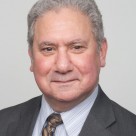DENVER—The Mile High City is clearly on a roll. With two primary locations serving as office hubs—one in the Downtown/LoDo market and the other in the Southeast suburbs—growth clearly is the name of the game.
In fact, according to Larry Thiel, managing director of investment sales and capital markets for GlobeSt.com Thought Leader Transwestern, “Class A CBD rates have grown 8% over the past 12 months and 13.4% over past 24 months. Class B has grown 6% and 13.7%, respectively. Southeast suburban class A has grown 3.1% and 8.3% in the past 12 and 24 months.” Class B rents have grown 4.9% and 12.2%.
Interestingly, the city's traditional equilibrium is being challenged in the face of this activity, as Thiel reports. “Over the past 15 years in the CBD,” he says, “equilibrium has been 10% vacancy for combined class A and B product. For the Southeast suburban market, historical equilibrium has been 14% to 15%. However, we're currently near 10% vacancy with rents continuing to rise, suggesting a new equilibrium is being established in the 9%-to-11% vacancy range.”
There are a number of drivers of these changes, changes that come in addition to the traditional strength of the market, such as a ready, young workforce being fed by three local universities, a business-friendly political climate and a growing influx of people. (Thiel says there have been estimates of 90 people a day moving in.)
Denver also emerged from the recession with a different focus than when the downturn hit. A traditionally heavy oil and gas industry was augmented by a more diverse economic base, happily minimizing the city's hit from the recent oil and gas slump. In fact the industry went from a 40% high in Downtown occupancy to a current level of roughly 15%, and yet as shown above, in what Thiel describes as a game of musical chairs, vacancies continue to shrink as rents climb.
Another driver of the local market is the city's dedication to a new transportation system, the highlight of which is a light rail system that will link the Southeast suburban market and Denver International Airport with LoDo and a refurbished Union Station Downtown. In fact, office rents in the suburban market are on average $7 a foot higher if the asset is closer to the light rail station than the $26 per foot that is common in the submarket.
What is leasing growth doing to sales? Just what you'd expect. “For the downtown market, including LoDo, the average cap rate is about 5.5% when occupancy is about 88 to 90%,” says Thiel. “In the Southeast suburban area, we're seeing an average cap rate of 6.5% when occupancies hover around 80%.”
In terms of pricing on those assets, Thiel reports a Downtown average of around $270 per foot combined A and B, although new construction can hit as high as $600. In the Southeast suburban submarket, the average sale price hovers around $155 a foot combined.
The market is dominated by private buyers, Thiel says, who ae mostly focused on the Southeast suburban and Downtown markets, largely because of their strong fundamentals. But many of these private sources “have varying sources of equity behind them, including foreign capital or an equity fund as a JV partner.” There is also what Thiel calls a “considerable amount of REIT activity,” which is focused more on the red-hot Downtown market.
But not even Denver is totally carefree, and there are challenges that the market faces, including the threat of spec development. Thiel reports that, while there are only a few spec projects moving forward now, no fewer than 28 are being proposed.
And, despite a generally business-friendly climate, “like many parts of the country, the underwriting of tax increases is a challenge for buyers because taxes are going up rather severely,” he says. “In Denver we have a lot of full-service gross leases, and when they get renewed their base gets adjusted. Oftentimes this tax hit next year and the following year will make an impact on valuations today.”
“Probably the most systemic problem the MSA faces is the age of the inventory,” a challenge, says Thiel, to “both buyers and sellers. There are few buyers that can pick up existing stock and fill it without, “some capital investment.”
© 2025 ALM Global, LLC, All Rights Reserved. Request academic re-use from www.copyright.com. All other uses, submit a request to [email protected]. For more information visit Asset & Logo Licensing.








